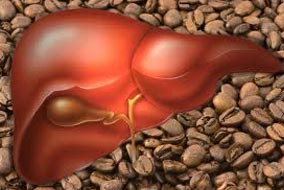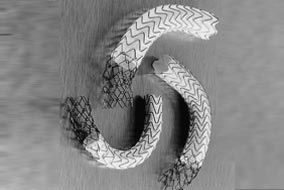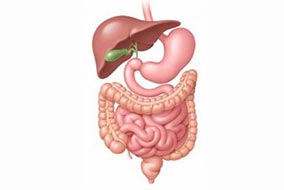We look at the study and treatment of disorders of the esophagus, stomach, small & large bowel, pancreas, liver and biliary system. We offer outpatient and inpatient facilities and also provide endoscopy services.
Some of the problems treated are :
- Gastroesophageal reflux disease: reflux of contents from the stomach into the oesophagus, causing heartburn, burping and regurgitation
- Difficulty/pain during swallowing and esophageal cancer
- Peptic ulcers: these can cause indigestion and also bleeding into the gut
- Diseases of the Pancreas including Acute and Chronic Pancreatitis, Pancreatic mass/ Cancer and Pancreatic Cysts
- Malabsorption : when food is not properly absorbed, causing diarrhea, malnutrition and weight loss
- Cancers of the gut
- Inflammatory bowel disease like Crohn’s disease and ulcerative colitis,
- Liver diseases like hepatitis, fatty liver disease and cirrhosis; they can cause jaundice, abdomen distention, leg swelling and
blood vomiting
- Gallbladder problems like gallstones and bile duct stones
- Constipation and faecal incontinence
- Gas bloat and flatulence
- Irritable bowel syndrome
- Blood vomiting and bleeding through Anus
- Emergency treatment for gastrointestinal bleeding, foreign body ingestion and pancreatitis (inflamed pancreas)
Endoscopy Services
Endoscopy uses a very thin camera on the end of a flexible tube to look inside the gut. Gastroscopy looks from the top into the stomach; colonoscopy looks from the bottom into the colon.
The Endoscopy services function on all weekdays and includes a 24 hr emergency service.

Upper Gastrointestinal Endoscopy (Diagnostic & Therapeutic): This can diagnose problems related to the esophagus (gullet), stomach and upper small bowel. Disorders that can also be treated using the endoscope include:
- Foreign body removal
- Esophageal Dilatation – dilating the esophagus when there is a narrowing
- Pneumatic Dilatation – dilating using special air pressure
- Treating bleeding varices (engorged veins in liver disease) by ligation (applying plastic rings)
- Treating bleeding ulcers by injection, application of heat (argon plasma coagulation) and clips (hemoclips)
- Cyanoacrylate (Glue) injection of gastric varices
- Enteral Tube Placement – putting a feeding tube in
- Endoprosthesis placement– putting in a stent to relieve obstruction due to narrowing of the lumen
- Polypectomy – removing polyps (small mucosal projections) from the gut
- Percutaneous Endoscopic Gastrostomy – putting a tube into the stomach (tummy) by endoscopy, for feeding problems
Colonoscopy (Diagnostic & Therapeutic):This procedure is done to look for problems related to the anus, rectum, large and small bowel, like bleeding through the anus, diarrhea, constipation and unexplained weight loss.
- Polypectomy – removing polyps from the lower end of the gut
- Enteral Stent Placement: putting in a stent, which is a piece of equipment that holds open narrowed areas in the colon
- Argon Plasma Coagulation for hemorrhagic lesions – treating bleeding areas

ERCP (Endoscopic Retrograde Cholangio-Pancreatogram):
This procedure is used to diagnose and treat disorders of the biliary and pancreatic ducts (tubes that join the gut to the liver and pancreas). ERCP is primarily used as a therapeutic procedure for treatment of diseases of
Bile ducts
- Treatment of bile duct infection (cholangitis) by draining pus by cutting open bile duct opening (biliary sphincterotomy) and placing stents in bile duct for free drainage of bile into duodenum
- Removal of bile duct stones by balloon/basket
- Crushing large bile stones and retrieving them (mechanical lithotripsy)
- Relieving jaundice due to bile duct narrowing by dilating passage with balloon or dilators
- Stopping bile leakage due to surgery/ trauma by placing stents
- Metal stent placement for relieving jaundice due to inoperable bile duct, pancreatic, gallbladder cancers

Pancreas
- Relieving pain in chronic pancreatitis, by removal of pancreatic duct stones/ dilating the narrowed pancreatic duct
- Placing of stents to facilitate drainage of fluid collection in pancreatitis (Pseudocyst drainage)
Endoscopic Ultrasound (EUS)
It is an imaging technique wherein Endoscopy is combined with ultrasound to obtain images of the internal organs in the chest and abdomen. Its uses include

- EUS can help determine the extent of certain malignancies of the gastrointestinal tract (Staging), including cancers of the esophagus, pancreas, stomach, and rectum
- EUS with fine needle aspiration (FNA) of lymph nodes helps in accurate staging of cancer spread and to guide in the proper treatment of cancers. EUS can help determine the need for or avoidance of surgical procedures
- EUS-FNA helps in tissue for diagnosis of mediastinal lymphadenopathy (lymph nodes in the chest)
- EUS can evaluate disorders of the bile duct such as tumours, stones, microlithiasis and dilatation of unknown etiology
- EUS together with FNA is used to evaluation of chronic pancreatitis, pancreatic masses and cystic (fluid filled) lesions
- EUS is the least invasive treatment of choice for the drainage of pseudocyst of pancreas
- EUS is used to evaluate submucosal (beneath the superficial layer) lesions of the gut
Capsule Endoscopy
Capsule endoscopy can help in visualizing and evaluating the small intestine (duodenum, jejunum and ileum) and is done to detect obscure gastrointestinal bleed (bleeding where the source has not been identified by upper endoscopy and colonoscopy. It can also detect small bowel tumors, ulcers and inflammatory bowel disease.